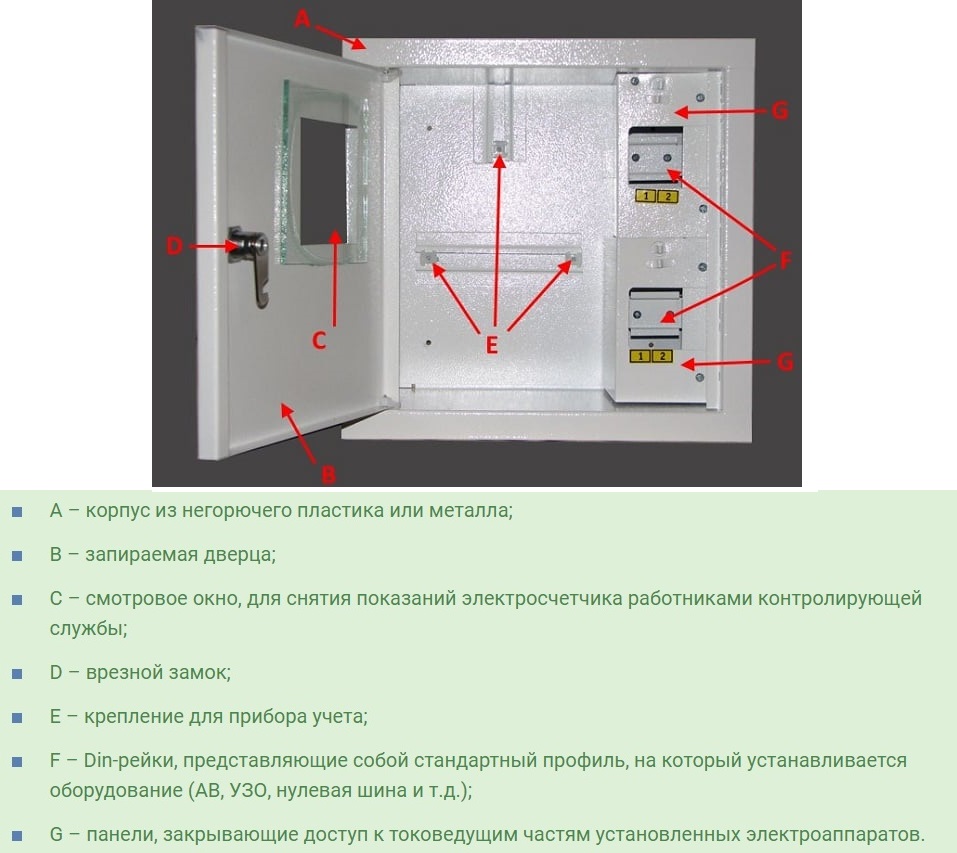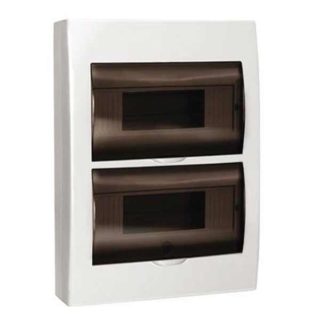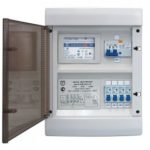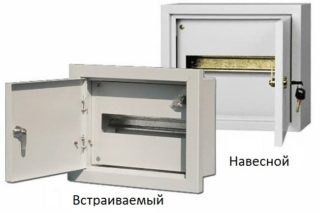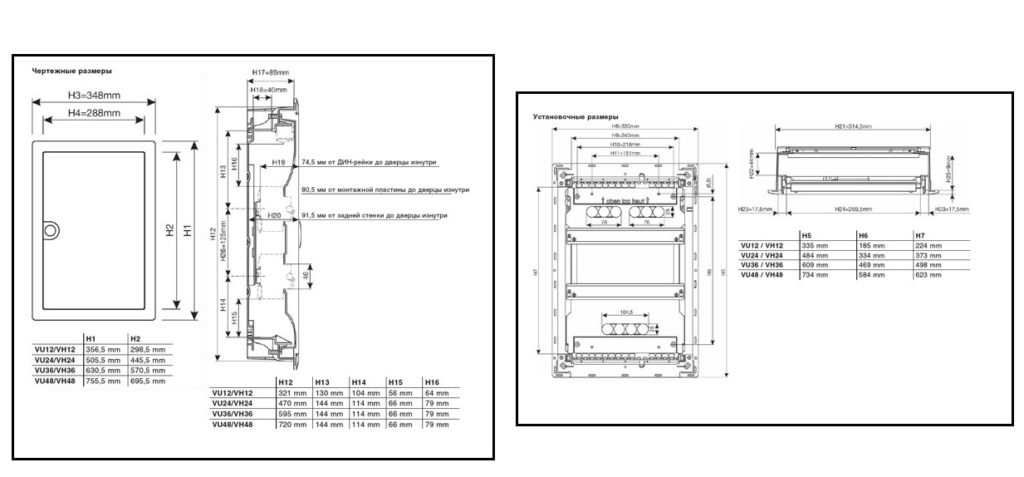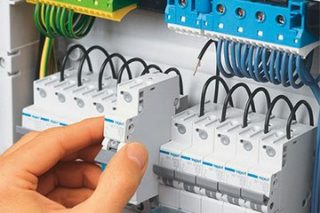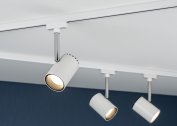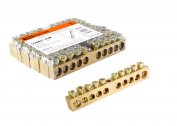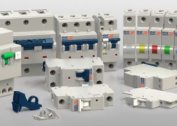When installing electrical wiring in an apartment, private house, cottage, administrative or industrial building, a prerequisite is the use of a box for automatic machines - a special switchboard in which circuit breakers, a meter and other protective devices will be located.
Electrical panel design
The simplest and most common box for automatic machines consists of the following parts:
- Front panel (cover) - equipped with an opening transparent door and breakable sections for installing a certain number of machines and other devices. Fastens to the main body with 4 plastic screws. Depending on the model, the door can be equipped with both a simple self-locking push-pull lock and a lock with a core and a set of keys.
- Case - the bulk of the main part of the box, inside which will be located all the machines, RCD, counter.
- DIN rail - a metal strip for mounting in the box of machines and other devices.
- 2 busbars for connecting ground and ground wires.
Also, the set of switchboards includes special dowels for attaching the box to the wall, a support (protective cover, holder) for zero and grounding tires.
In some models, DIN rails are mounted on special removable holders that allow you to adjust the height of its installation relative to the front panel.
Appointment of boxes for machines
In addition to circuit breakers, boxing is used for installation and compact placement of such protective and instrumentation devices:
- RCD (residual current devices);
- electronic meters;
- differential automata;
- introductory machines.
In addition to these devices, the busbars (combs) of the grounding and the neutral wire included in the delivery set are also installed in the box.
Types of equipment in accordance with GOST
According to the latest edition of GOST 32395-2013, depending on the location of the boxes for machines there are two main types:
- Housing - boxes with protective devices, switches and counters. They are installed in common corridors uniting several apartments. They are used to protect against voltage drops in electrical networks of these residential premises, as well as to account for the amount of electricity consumed.
- Floor (general) - distribution boxes with installed protective devices and switches designed to protect against power surges and, if necessary, disconnect all consumers on the same floor.
- Floor shield
- Apartment boxing
In addition to this classification, boxes for electric machines are divided into 2 types, depending on how they are installed:
- Built-in (internal) - are installed in the niches of the walls, so they take up little space and fit well into almost any interior.
- Mounted (external) - are fixed on the wall itself. They take up much more space than built-in ones, as a result of which they have a less attractive appearance.
Wall-mounted models are more popular, as they look more aesthetically pleasing and tidy, easy to maintain. Mounted ones are most often used in cases where it is not possible to cut a niche in the wall or the surface on which the junction box is placed, much smaller in width (for example, when mounting a metal box on a pole).
Box Specifications
The technical characteristics of junction boxes include the class of electrical insulation and protection, the type of material from which the housing and other components are made, the overall dimensions of the box and the number of modules that can fit into it.
Electrical insulation and protection class
All modern models of boxes have a class II electrical insulation, so they can be mounted in rooms with humidity up to 85% and in street conditions.
By the degree of protection against penetration of mechanical particles and moisture, boxes can belong to the following classes:
- IP30 - installed inside residential premises. Provide protection to devices inside from mechanical particles larger than 2.5 mm. Such a box does not protect against moisture drops.
- IP40 is also a box installed inside residential premises that protects the devices placed inside it from mechanical particles larger than 1 mm, while not providing protection against drip moisture.
- IP55 is a universal distribution box that can be installed inside living quarters, bathrooms, outdoors. It has full protection against dust and water jets.
In most cases, junction boxes of the first two classes are used - they are more accessible and at the same time provide the necessary protection for residential premises from dust and large particles. Boxes of IP 55 class are used less often - they have a high cost and do not always justify themselves when installed in rooms with low humidity.
Case and part manufacturing material
For the manufacture of the body and lid of the box using the following materials:
- Polymers - flame retardant polystyrenes, ABS plastics of various colors (from white to brown or even red).
- Metal - sheet steel up to 1.5 mm thick.
Tires for grounding and neutral wire are made of high quality copper. DIN mounting rails for mounting height are made of polyphenylene oxide.
Number of rows and modules
The number of rows in modern models of boxes for machines ranges from 1 to 4, installed modules (machines, switches and other devices) from 2 to 56-60 pieces.
Shield Rating
The box for automatic machines, depending on the number of devices built into it, can have the following overall dimensions:
- height - from 125 to 714 mm;
- depth - from 58 to 88 mm;
- width - from 44 to 359 mm.
The maximum weight of plastic junction boxes is 1.5-2.0 kg, metal -4.6 kg. Use boxes in networks with voltage up to 400 V with current strength from 5-6 to 63 A.
Tips for selection and assembly wizards
When installing and installing various devices inside the box, the following tips from masters and experienced electricians will be useful:
- The selected box for circuit breakers must have a “margin” in the number of modules so that in the future when connecting new equipment you do not have to buy another box.
- A box for an introductory automatic machine with special sealing can be installed inside a spacious shield, always placing it in front of the counter, and not after it. This will allow the meter to be de-energized and removed for repair or verification. Removing the seal and re-sealing the meter is performed by the controllers of the energy supply company.
In the absence of skills in the installation and assembly of junction boxes, it is better to entrust the work to experienced craftsmen. Despite the costs, it will be cheaper than the damage from fire or fire if the box and protective devices are not installed correctly.

